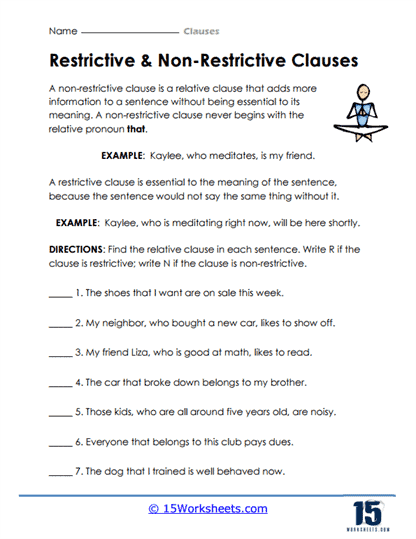Restrictive And Non-Restrictive

Worksheet Description
The “Restrictive & Non-Restrictive Clauses” worksheet is an educational tool aimed at teaching the distinction between two types of relative clauses. It provides definitions and examples for both restrictive clauses, which are essential to the meaning of a sentence, and non-restrictive clauses, which add extra information without altering the sentence’s fundamental meaning. The worksheet challenges students to read sentences and determine the nature of the relative clause contained within, marking it as restrictive (R) if it is essential to the meaning, or non-restrictive (N) if it is additional information. This activity allows students to practice and solidify their understanding of sentence structure in context.
This worksheet is designed to teach students how to identify and differentiate between restrictive and non-restrictive clauses. Understanding this distinction is crucial for proper punctuation usage, as non-restrictive clauses are typically set off by commas. The exercise enhances students’ reading comprehension and editing skills, as they learn to analyze the importance of clause information to the overall sentence. By completing this worksheet, students gain a deeper grasp of how the inclusion or exclusion of a clause can change the nuance of what is being communicated, which is a key component of mastering written English.
